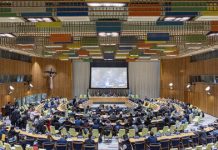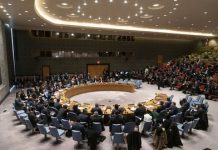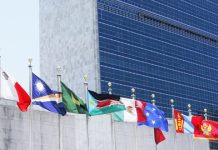Across Europe, more than 50 countries “are paying the ultimate price”, said WHO Regional Director Dr. Hans Kluge, only days since Earth recorded its warmest average temperature yet, at 17.16 degrees Celsius (62.89 Fahrenheit), and as exhausting summer heatwaves hit across the northern hemisphere.
Dr. Kluge said that the three warmest years on record in Europe have all happened since 2020 and that the 10 hottest years have all been charted since 2007.
Heat: The leading killer
“In the European region, heat stress is the leading cause of climate-related death in the region,” he said. “Temperature extremes such as those we’re experiencing at the moment are really exacerbating chronic conditions, including cardiovascular, respiratory and cerebro-vascular diseases, mental health and diabetes-related conditions. The extreme heat that we’re experiencing is a particular problem for elderly people, especially those living alone. It can also place an additional burden on pregnant women.”
Protection measures call
The WHO insisted that more governments need to take action to mitigate heat shocks on vulnerable people.
More than 20 countries in the WHO Europe region have such plans in place which is “not enough to protect all communities”, the UN health agency warned.
That message echoes the Call to Action on Extreme Heat by UN Secretary-General António Guterres, who insisted that Earth “is becoming hotter and more dangerous for everyone, everywhere”.
In some places around the world, the climate crisis is already driving temperatures up to unbearable levels, WHO noted. Estimates show that globally, approximately 489,000 heat-related deaths occurred each year between 2000 and 2019, with the European Region accounting for 36 per cent or on average more than 175,000 lives every year.
Hot Earth
Mr. Guterres’s comments came in the week that saw the three warmest days recorded on Earth in recent history, according to one of the datasets that the UN World Meteorological Organization (WMO) uses to monitor the climate.
On 22 July 2024, the daily global average temperature reached a new record high of 17.16°C, according to the European Union’s Copernicus Climate Change Service. On 23 July, the preliminary value was 17.15°C. On 21 July, the temperature record was 17.09°C. All three days were warmer than the previous record of 17.08°C, set only last year on 6 July 2023.
As part of the UN health agency’s #KeepCool campaign, which offers simple guidance to keep everybody safe, Dr. Kluge insisted that the negative health effects of hot and extreme heat are largely preventable.
“If we are better prepared for a hotter region, we will save many lives, both now and in the future,” he said.
The WHO’s guidance on coping with heatwaves includes:
- Keeping out of the heat: Avoid going out and undertaking strenuous activities when the sun’s at its hottest. Stay in the shade and do not leave children or animals in parked vehicles. If necessary and possible, spend two to three hours in a cool place, such as a supermarket or cinema.
- Trying to keep your home cool: Use night air to cool down your home. Reduce the heat load inside your home or hotel room during the day by using blinds or shutters, opening them at night to ventilate your home.
- Keeping your body cool and hydrated: Use light and loose-fitting clothing and light bed linens, take cool showers or baths and drink water regularly while avoiding sugary, alcoholic or caffeinated drinks which will leave you dehydrated.
- Taking care of yourself and others: Check on family, friends and neighbours, especially the elderly, especially if they are on their own.
Understanding the risk
UN guidance on what constitutes heatwaves is “periods of unusually hot and dry or hot and humid weather that have a subtle onset and cessation, a duration of at least two to three days and a discernible impact on human activities”.
Heatwaves differ from warm spells, although they have many similarities. A warm spell is defined as a persistent period of abnormally warm weather in a location. A warm spell can also be defined in terms of the 90th or 95th percentile of daily maximum temperature (Tmax).
Warm spells can occur at any time of the year, whereas heatwaves can only occur in the warm season, according to WMO.
Source of original article: United Nations (news.un.org). Photo credit: UN. The content of this article does not necessarily reflect the views or opinion of Global Diaspora News (www.globaldiasporanews.net).
To submit your press release: (https://www.globaldiasporanews.com/pr).
To advertise on Global Diaspora News: (www.globaldiasporanews.com/ads).
Sign up to Global Diaspora News newsletter (https://www.globaldiasporanews.com/newsletter/) to start receiving updates and opportunities directly in your email inbox for free.































